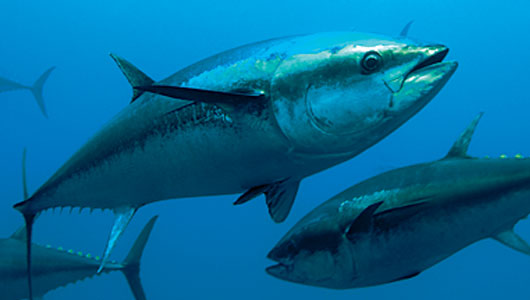Don’t Believe in Climate Change? Talk to a Clam Digger
As ocean waters are turning corrosive, scientists say there may not be any oysters left to eat in coming decades. Ocean acidification, like climate change, is the result of the enormous amount of carbon dioxide humans have pumped into the atmosphere. Oceans have absorbed about a quarter of that output, and ocean chemistry has changed as a result. Surface water pH has long been an alkaline 8.2, not far from the pH of baking soda, but it now averages about 8.1. That doesn’t look like much, but since pH is a logarithmic scale, that means a 30 percent increase in the acidity. By the end of this century, surface water pH could further lower to 7.8 or below. Unlike other problems caused by CO2, ocean acidification is spurring some action, possibly because the effects are so visibly tied to the cause. Those who work in the fishing industry are leading the awareness. Clam diggers have reported clams with thinner shells — so thin, they say, that sometimes it’s not possible to fill bushel baskets to the top because the fragile shells at the bottom will be crushed. The long-term projections for ocean acidification suggest that more comprehensive, aggressive measures must be taken in order to tackle this issue.
Bluefin Tuna Caught Near California, Still Radioactive Years After Fukushima
Weeks after it was reported that overfishing had reduced the Pacific population of the Bluefin Tuna, which is popular in sushi bars, by over 96 percent, researchers have found trace levels of radiation still lingering in their flesh almost two years after the catastrophe at the nuclear plant in Fukushima, Japan. And the 50 tuna they  studied were all caught off the coast of California, 6,000 miles east of Japan, where they were born. The tuna that registered the highest levels of radioactivity were those that migrated to California in 2011, soon after the accident, but those that migrated in 2012 also demonstrated above-normal levels of radiation. Monte Burke at Forbes writes that the results of the study suggest “there is still a high level of radiation in the waters near the Fukushima plant most likely because, as marine chemist, Ken Buessler, asserts, the plant is still leaking radiation into the ocean nearly two years later.”
studied were all caught off the coast of California, 6,000 miles east of Japan, where they were born. The tuna that registered the highest levels of radioactivity were those that migrated to California in 2011, soon after the accident, but those that migrated in 2012 also demonstrated above-normal levels of radiation. Monte Burke at Forbes writes that the results of the study suggest “there is still a high level of radiation in the waters near the Fukushima plant most likely because, as marine chemist, Ken Buessler, asserts, the plant is still leaking radiation into the ocean nearly two years later.”
What Really Causes Celiac Disease?
 With complaints of celiac disease on the rise, quadrupling in the United States in just 50 years, scientists are puzzled by what has caused this increase to occur. Scientists are pursuing some intriguing possibilities. One is that breast-feeding may protect against the disease. Besides optimal nutrition of carbohydrates (lactose), proteins, fats, iron and calcium, mother’s milk provides special immune-boosting IgA and IgB factors not found in formula milk. These are believed to have life-long immunity benefits. The decrease in breast feeding may correlate with the increased sensitivity to celiac. Other theories proposed for the surge in gluten intolerance are that we have neglected the teeming ecosystem of microbes in the gut — bacteria, and the increase in the amount of gluten found in grains, as well as an increase in overall consumption of wheat. None of these theories are definitive. Scientists continue to look at the various possibilities as to why so many people increasingly suffer from celiac.
With complaints of celiac disease on the rise, quadrupling in the United States in just 50 years, scientists are puzzled by what has caused this increase to occur. Scientists are pursuing some intriguing possibilities. One is that breast-feeding may protect against the disease. Besides optimal nutrition of carbohydrates (lactose), proteins, fats, iron and calcium, mother’s milk provides special immune-boosting IgA and IgB factors not found in formula milk. These are believed to have life-long immunity benefits. The decrease in breast feeding may correlate with the increased sensitivity to celiac. Other theories proposed for the surge in gluten intolerance are that we have neglected the teeming ecosystem of microbes in the gut — bacteria, and the increase in the amount of gluten found in grains, as well as an increase in overall consumption of wheat. None of these theories are definitive. Scientists continue to look at the various possibilities as to why so many people increasingly suffer from celiac.
Comments are closed.